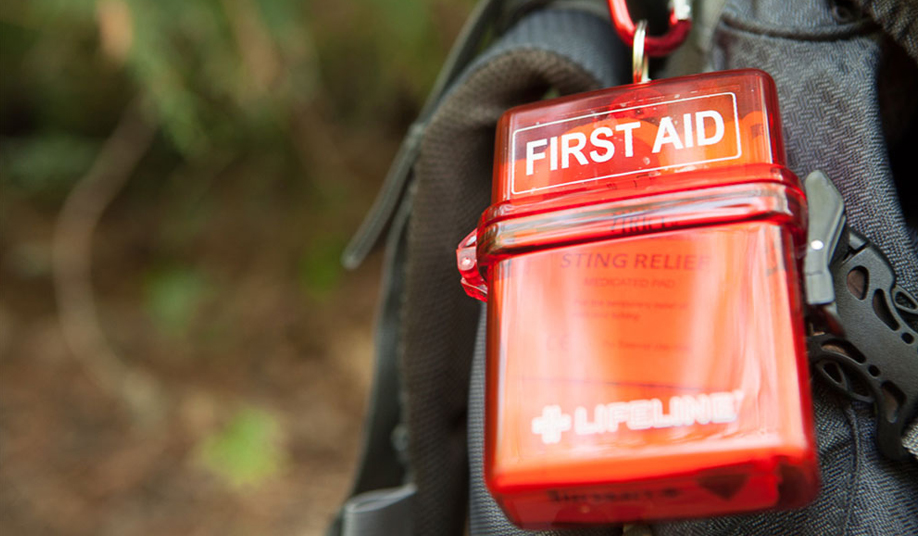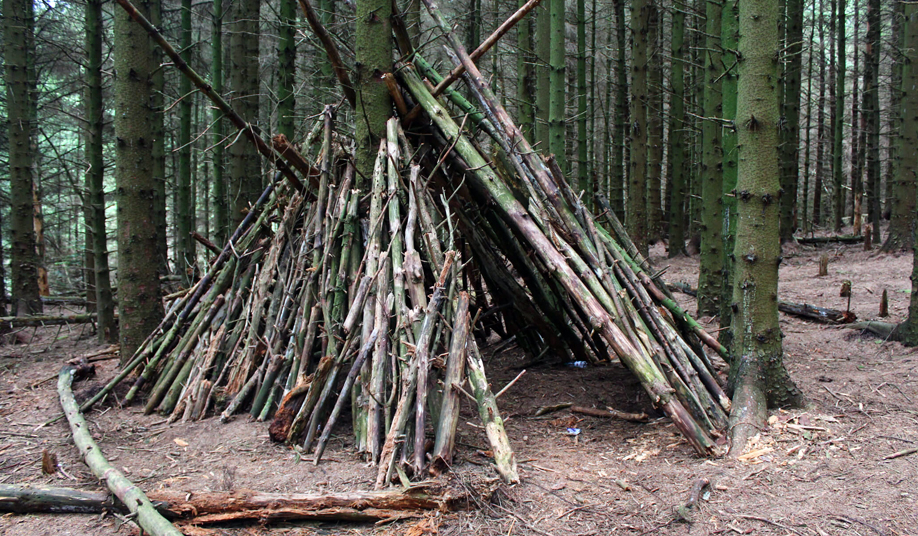SURVIVAL SKILLS FOR THE EVERY MAN Tap into Your Inner Bear Grylls
Hopefully you’re never (unwillingly) stranded in the woods by yourself, but if you are, here are some important survival tips to keep in mind.
 Secure Your Immediate Safety
Secure Your Immediate Safety
Get to dry land, slowly back away from predators, or tend to a bleeding wound. You can’t perform any of the necessary survival steps if you’re bleeding out. This is why it’s always a good idea to have a basic first aid kit with you anytime you’re in the wilderness.
 Find or Create Shelter
Find or Create Shelter
Your body does the best that it can to regulate your internal temperature, but Mother Nature doesn’t really care about that. If you’re lost in the woods, your odds of dying are greatly compounded if you don’t have shelter and end up with any sort of inclement weather. All you really need is protection from the elements and a way to keep warm. There are multiple options here. The most basic: find a cave (if you don’t live in a Mark Twain novel that may be hard to come by). The next option: a lean-to. There are multiple evolutions of this from simply leaning a large stick or fallen tree against another structure (tree, rock wall, etc.) and then leaning more sticks against it, to the more sophisticated option of building a freestanding tripod structure and covering it with fabric or a tarp: your traditional teepee.
 Find Water
Find Water
This is the most important thing after securing your immediate safety. If you can hear water, problem solved—almost. You’ll want to boil any water you find to protect against harmful microbes and bacteria. If you don’t hear water, don’t lose your head. Keep in mind that water will always travel to lower altitudes so start heading downhill. Animals that graze tend to search out drinking water around dawn and dusk so that’s always an option. Flies and mosquitos similarly are key indicators that you’re on the right track. A note about river water: the faster and clearer the stream, the better to drink. Avoid stagnant water at all costs—this will undoubtedly be full of harmful bacteria. If all else fails, digging deep enough in the soil will occasionally produce groundwater, although the amount of contaminants is often fairly high. Keep in mind that with whatever you’re facing, access to drinkable water will be the most important factor in your survival.
 Build a Fire
Build a Fire
A fire is a necessity for boiling water and keeping yourself warm through cold nights. It can also serve as an important boundary marker and a way to warn off would-be predators, not to mention help you signal for help! Start by collecting dry brush—emphasis on dry. You don’t want anything green here. Dry grass, dead twigs broken down to be tiny, anything like that. Strip them into small pieces and use the best method you have for getting a little flame and build up from there. Fire-starting options to consider: a lighter, matches, the old hand drill or bow drill tactic, a magnifying glass, eyeglasses, rubbing a battery against steel wool (your cellphone’s battery will work too), or even crushing ice into a focusing lens. Be sure to start your fire in a place that will give you heat if you need it but not light any part of your shelter into a blaze.
 Find Food
Find Food
You’re a little on your own with this one. Hopefully you’re in a terrain you’re at least somewhat familiar with so you’ll have a sense of what type of foliage you can eat. Which is one reason why it’s worth purchasing a guide to edible plants in general and for your region in particular. Stay away from mushrooms. A mnemonic device for wild berries from a famous green beret states, “White and yellow, kill a fellow. Purple and blue, good for you. Red...could be good, could be dead.” When it comes to wild game: fishing is easier than trapping, trapping is easier than hunting or spearing. By easier I mean it requires less calories to perform which will be a key factor in avoiding “rabbit starvation” if you’re out there for a while. But I still suggest reading up the easiest ways to fish, trap, and hunt.






